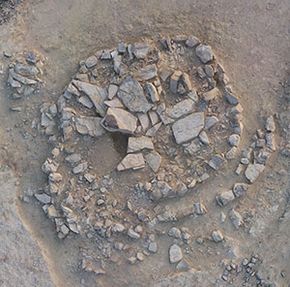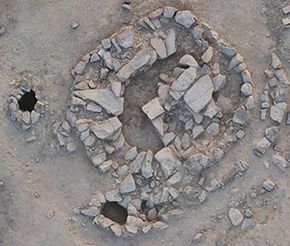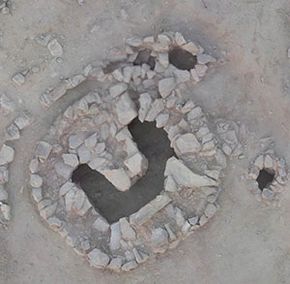
Grave 4 at the beginning of the work, following the removal of surface deposit (IMTO archive).

Grave 4 and the two nearby sub-circular grave G5 and G7 during the excavations (IMTO archive).

Orthophoto of G4 at the end of the excavation. G5 and G7 are also visible (IMTO archive).
